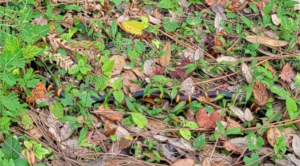Pets and Their People Blog
Slithery Snakes and Other Scary Things!
It’s that time of year when we see many snakes and lizards warming themselves along our running pathways. Having lived in Florida for over 15 years, I know these are a common but not always welcome sight.
As a certified dog trainer and behavior consultant, snake avoidance was built into my puppy-raising plan when Doogie came into our home as an 8-week-old rascal. We lived on 24 acres with water frontage, so it was essential to ensure Doogie had the skills and knowledge to avoid a critter safely should she encounter one while out and about. Please don’t misunderstand. Doogie was never left unsupervised outside – ever. Still, in the routine of walking, playing, and doing dog sports, it was guaranteed that her path would cross with other critters that called our property home.
I was reminded yesterday of the importance of teaching our pet dogs to respond to our cues, precisely as they will be delivered when needed!
Here is what I mean. Teaching a recall cue such as “come” using only a gentle and happy voice may not work under emergency conditions. If your dog is running into a road or away from you toward danger, I doubt your voice will be gentle and happy. Instead, it will be loud, panicked, and abrupt. In that panicked moment, your emergency cue will need to work and, therefore, must be trained in that manner. Cues for our dogs should be clear, concise, and consistent. Shouting “come” in a happy voice is very different from a panicked and scary “come” signal.

So, you may be asking yourself, what happened yesterday? Doogie and I were out for a run and bumped head-on into a coral snake. Coral snakes are one of Florida’s most venomous snakes and the only one that scares me.
We were running along happily, enjoying each other’s company and the sights and sounds of mother nature. But then, it was suddenly there, right underfoot on the pathway. I screamed some loud profanity as I attempted an Irish jig with my feet; at the same time, Doogie saw or smelt the critter on the path. I don’t know if she responded to my ridiculous yelps or her observations. Still, Doogie swerved into a wide right-hand turn, moving away from the snake, bringing me to the ground as I halted quickly and most certainly not delicately.
As the snake slowly, with no concern, slithered into the grass, I realized that Doogie had responded precisely how I had trained her to respond. See the snake and move away, giving the snake a very wide berth. However, I had not prepared us for this individual scenario where she was on a leash attached to my running belt. Doogie’s quick movement from my left to the right side put me in peril as I was moving very quickly. On reflection, I also think that my loud profanity concerned her. I was on the ground with Doogie left sitting behind with a “what on earth just happened” look on her face.
As we ran home, I contemplated our experience and made a note to redo some of our snake avoidance training. The priority is on a more panicked emergency “wait” cue and a new response from Doogie should this be used again when we are attached. Maybe I will even build into the cue some profanity. If this is my accurate emergency response, it’s essential to incorporate it into the training.
One important last note. It is never helpful or humane to use harmful tools, equipment, or training approaches if you embark on snake avoidance training. However, as I have done, you CAN teach your dog, using positive reinforcement, that should it see or smell a snake, it should perform a behavior that takes the dog outside the snake’s strike area. Also, pet dogs should not be left unsupervised in places where they can get themselves into trouble, whether with a snake or other danger.
About the Author
 Niki Tudge M.B.A, PCBC-A, CABC, CDBC SSA-CFT, Six Sigma Black Belt, HCITB TS1, TS2 & TS3 is a certified Dog Behavior Consultant and also holds reputable health and fitness certifications.
Niki Tudge M.B.A, PCBC-A, CABC, CDBC SSA-CFT, Six Sigma Black Belt, HCITB TS1, TS2 & TS3 is a certified Dog Behavior Consultant and also holds reputable health and fitness certifications.
As the founder and President of The Pet Professional Guild, DogNostics Education, and The DogSmith, Niki has substantial leadership experience in the pet industry. Niki has published numerous articles on dog training and behavior, and her pet dog training businesses have been featured in many publications, including The New York Times.
Niki’s professional credentials include; AABP-Professional Dog Trainer, AABP-Professional Dog Behavior Consultant, PCBC-A, and PCT-A through the Pet Professional Accrediting Board. Niki also earned diplomas in Animal Behavior Technology and Canine Behavior Science & Technology through the Companion Animal Science Institute.
Along with Niki’s business degree and M.B.A. from Oxford Brookes University, she is also a certified Six Sigma Black Belt, an HCITB TS1, TS2 & TS3 certified people trainer, and a certified Team Facilitator and Project Manager.
To compliment Niki’s’ dog behavior skills and experience, she is also a certified Fitness Instructor, Walking & Running Coach and carries several certifications in the health and fitness industry. Additionally, Niki offers coaching and programs through her Run With Your Bestie business.
Her professional credentials include; International Sports Science Association (ISSA) certified fitness trainer, ISSA certified transformation specialist, nutritional coach, and ISSA elite trainer. Niki is also a certified ChiWalking and ChiRunning coach. In addition, she has completed the well-known M.A.F. Foundations certificate course developed by Dr. Phil Maffatone and is a supporter of the M.A.F. system.
